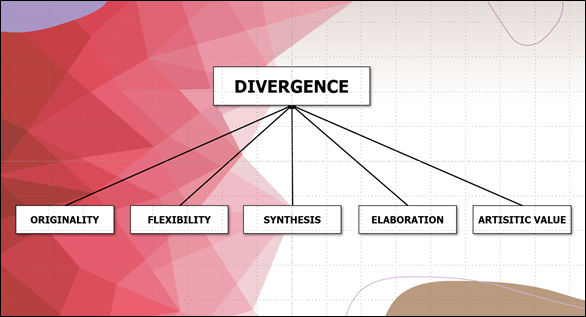The Five Elements of Divergence Which Underpin Advertising Creativity
But how can advertisers and marketers promote more creativity in their advertisements?
By applying a study conducted by Indiana University’s Robert Smith and his research group, we can begin to think of creativity in advertising as divergence from the common, familiar, or ordinary, as Smith found, “divergence was shown to be the leading indicator of ad creativity”.
From this he developed five measures which inform the level of divergence (and subsequent creativity) a given advertisement possesses. These being …
- originality,
- flexibility,
- elaboration,
- synthesis, and
- artistic value.
By understanding these frameworks, advertisers can better structure their thinking towards developing more creative concepts.

Originality
Original advertisements can be contextualised as those which communicate ideas which are surprising or rare. Originality can be measured using the questions below:
- Is the ad out of the ordinary?
- Is the ad unique?
- Does the ad break away from stereotypical thinking?
Perhaps one of the most memorable advertising campaigns in the last decade, Old Spice’s ‘The Man Your Man Could Smell Like’ is the perfect example of originality, by steering away from what was commonly thought of the men’s fragrance brand to create something truly unique.
Flexibility
Flexibility can be achieved through the presentation of multiple ideas, or ideas that move from one subject to another. Smith used the following to gauge an advertisements flexibility:
- Does the ad contain ideas that moved from one subject to another?
- Does the ad contain different ideas?
- Does the ad shift from one idea to another?
EXTRA’s ‘For When It’s Time’ uses various situations, people and locations to promote the use of their gum in a post-COVID world and is a great example of well executed flexibility.
https://www.youtube.com/watch?v=Gxm7Hu-IHJs
Elaboration
This dimension of divergence refers to advertisements which provide out of the blue details or expand simple ideas to become increasingly intricate and sophisticated.
- Does the ad contain numerous details?
- Does the ad finish basic ideas so that they become more intricate?
- Does the ad contained more details than expected?
Sony’s ‘Colour Like No Other’ provides a good example of elaboration. Taking the simple element of the Sony BRAVIA’s pixel colour and transforming it into an overwhelming, real-life sensation.
Synthesis
Synthesis encapsulates advertisements which combine two usually unconnected ideas or objects. It can be analysed by considering:
- Does the ad connect objects that are usually unrelated?
- Does the ad contain unusual connections?
- Does the ad bring unusual items together?
As an example, Mountain Dew combines an absurd ‘Puppy Monkey Baby’ creature with their Kickstart beverage in this horrifyingly creative advert.
Artistic value
Artistic value extends to the advertisements complete aesthetic appeal, including the colour, sound, and design amongst others. Understanding an ads artistic value can be a matter of asking:
- Is the ad visually/verbally distinctive?
- Does the ad make ideas come to life graphically/verbally?
- Is the ad artistically produced?
Honda’s 2015 ad ‘Paper’ tells the story of their 60-year history using hand-drawn illustrations and stop-motion to create this beautiful and distinctive advert.
Which elements should you prioritise?
All elements exhibit a positive relationship in driving creativity, yet they are not all created equal. Numerous studies have been conducted which apply Smith’s measures of divergence to determine their relative contribution in strengthening advertising creativeness. Sing and Gautam (2018) found “artistic value, has the strongest relationship with the attitude towards creativity”. Harvard Business Review (2013) similarly determined key strength in artistic value, as well as elaboration.
Furthermore, by studying campaigns that rated highly on at least two dimensions of divergence, HBR were able to establish a hierarchy of effective combinations:

As they note, “originality is often part of the most effective combinations, suggesting that this type of creativity plays an important enabling role”. Yet originality on its own is not enough to drive effectiveness, that requires high levels of performance in at least one other dimension.
Conclusion
By developing an understanding of the five levels of divergence, ad creativity can be seen as a tangible, measurable outcome, allowing advertisers to better asses their campaigns for future success.




